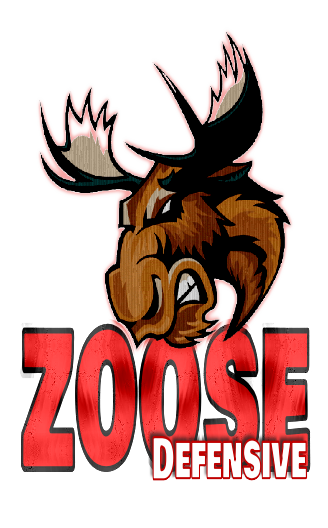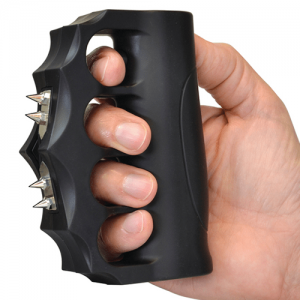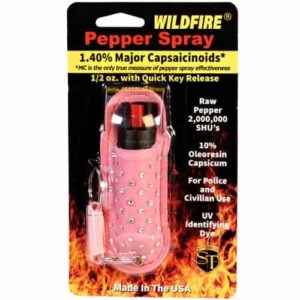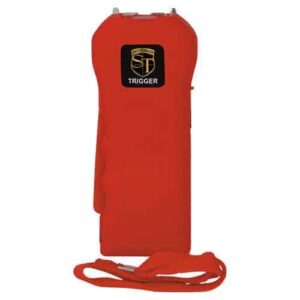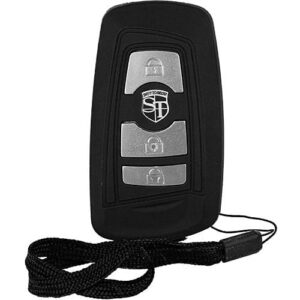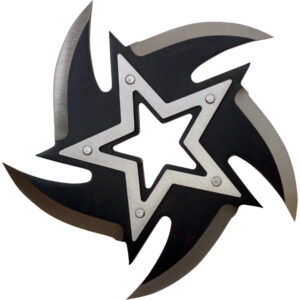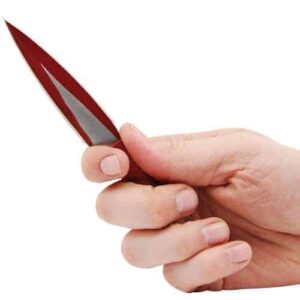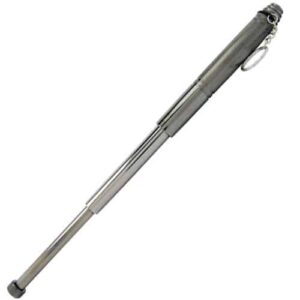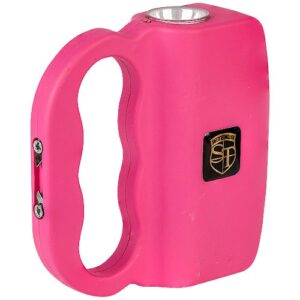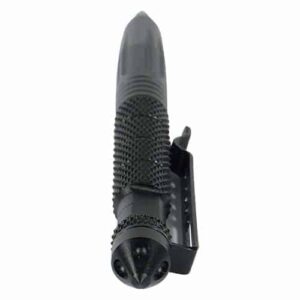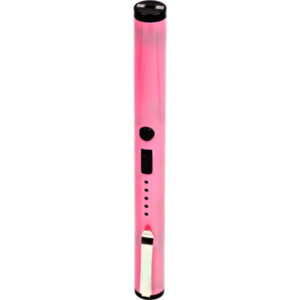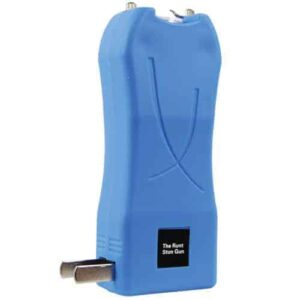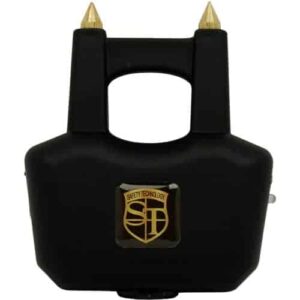Imagine having a pocket-sized weapon that could single-handedly deter potential attackers, giving you an upper hand. That’s exactly what the Kubaton Weapon is. This compact tool, small enough to clip onto your keychain, is a smart self-defense option built from solid high-impact plastic or metal. The Kubaton weapon can easily be wielded to strike or jab at an assailant’s sensitive areas and help to disarm them or buy much needed time to escape. This is where the power of the Kubaton truly lies – in your hands.
Table of Contents
ToggleWhat is a Kubaton Weapon?
A Kubaton weapon is a compact, easy-to-carry self-defence tool. One of the things that makes the Kubaton unique is its simplicity. At first glance, it looks like nothing more than a keychain or a small baton. However, when used correctly, it can be a potent weapon.
Definition
The Kubaton is a cylindrical stick, typically about 5.5 inches long and made of a hard, durable material like steel, hard plastic, or wood. Its name is derived from the blending of two words: “Ku” from Kubotan (a patented self-defense keychain weapon) and “baton.”
Origin
Originally developed in the 1970s by a man named Takayuki Kubota, the Kubaton was designed with law enforcement in mind. Kubota, a martial arts master, created the Kubaton as a way for police officers to control suspects without lethal force.
Common Uses
The primary purpose of the Kubaton is self-defense. Despite its simple design, it can deliver powerful strikes and pressure point attacks. Additionally, it can be used to immobilize an attacker temporarily by manipulating their joints or tendons.
Design and Features
Size and Material
The average Kubaton is around 5.5 inches long and about half an inch in diameter, making it small enough to fit in a pocket or purse easily. They are typically made of durable materials like aluminum or hard plastic, which can withstand the impact of a hit.
Grip
The surface of a Kubaton often has a textured or ribbed design to ensure a steady grip during use. Some also come with a loop or wrist strap to secure the weapon to your hand and prevent it from being dropped or disarmed.
Shape
While many Kubatons are cylindrical, they can come in various shapes and designs. Some may feature pointed ends for more severe pressure point attacks, while others may have a flat or rounded end for blunt force strikes.
Attachment Options
often, Kubatons come with key rings attached, allowing them to be disguised as ordinary keychains and carried around easily. Some may have clips for baselining on a belt or a bag.

History of Kubaton Weapons
Origins
The Kubaton weapon has its roots in Japanese martial arts. Its creator, Takayuki Kubota, was a martial arts instructor who recognized the need for a non-lethal self-defense tool for law enforcement officers, leading to the creation of the Kubaton.
Evolution
The original Kubotan was a metal rod about 5.5 inches long, but the design has evolved to include various shapes, materials, and additional features over the years. Nowadays, there are even Kubaton pens and flashlights available.
Popularity in Self-Defense
The Kubaton’s mild appearance and potent performance made it a popular self-defense tool among civilians and law enforcement alike. Today, it is widely recognized and utilized as a practical, compact tool for personal protection.
Legal Considerations
Laws and Regulations
The legality of carrying a Kubaton varies from place to place. In some regions, they are considered concealed weapons and are thus subject to local laws and regulations. It’s crucial to research and understand your local laws before acquiring a Kubaton.
Restricted Areas
Certain places, like aircraft or governmental buildings, often prohibit carrying weapons—including Kubatons. Always be aware of these restrictions to avoid legal trouble.
Carrying and Concealment
As Kubatons are small and discreet, they can easily be carried in a pocket, backpack, or purse. However, remember that concealing a weapon could have legal implications, depending on your location’s laws.

Self-Defense Techniques
Pressure Point Strikes
A primary use of the Kubaton is striking an assailant’s pressure points. These are sensitive areas where nerves and blood vessels are close to the skin’s surface. Even a light strike with a Kubaton can cause significant pain and subdue an attacker.
Joint Manipulation
Another effective Kubaton technique involves manipulating the attacker’s joints. Leveraging the Kubaton against a joint can cause severe pain and immobilize the assailant.
Escaping Holds
If you find yourself grabbed or held by an attacker, a Kubaton can be used to escape. By targeting vulnerable areas such as the attacker’s fingers, hands, or wrists, one can break free and create an opportunity to escape.
Training and Education
Formal Instruction
To maximize the Kubaton’s efficacy, consider seeking formal instruction. Many self-defense courses teach how to use a Kubaton effectively.
Self-Learning Resources
If formal instruction isn’t an option, self-learning resources like books, videos, and online tutorials can be beneficial.
Safety Precautions
Remember, like any weapon, a Kubaton can be dangerous if misused. Always practice safety precautions when handling, including using protective gear and never practicing on an unwilling person.

Alternatives to Kubatons
Pepper Spray
Pepper spray is a popular self-defense tool due to its range and potency. However, it can be affected by environmental factors like wind and requires accuracy to be effective.
Personal Alarms
Personal alarms emit a loud siren to attract attention and deter attackers. They are non-confrontational and legal in many places where weapons are not.
Tactical Flashlights
Tactical flashlights can temporarily blind an attacker and double as striking tools, making them versatile self-defense tools.
Choosing the Right Kubaton
Personal Preference
The best Kubaton for you ultimately depends on your personal preference. Consider factors like size, material, and design when selecting a Kubaton.
Effectiveness
Consider how effective a particular Kubaton will be for your needs. The effectiveness of a Kubaton depends largely on your ability to wield it properly.
Quality and Durability
Look for a Kubaton made from durable materials that can withstand repeated use. Quality is critical as your safety could depend on it.
Legal Restrictions
Before purchasing a Kubaton, check your local laws and regulations regarding carrying concealed weapons.

Examples of Kubaton Techniques
Striking Techniques
Striking techniques consist of jabbing or swinging the Kubaton against an attacker’s vulnerable areas.
Defense Against Common Attacks
The Kubaton can also be used to block or deflect blows from an attacker, or to break free from grabs and holds.
Disarming Techniques
With proper training, a Kubaton can be used to disarm an attacker by applying pressure to sensitive points that compel the attacker to release their weapon.
Useful Tips for Kubaton Users
Awareness and Preparedness
The most significant factor in self-defense is awareness and preparedness. Always stay alert and know where your Kubaton is at all times.
Choosing Targets Wisely
A strike will be most effective if aimed at sensitive areas. Common targets include the eyes, throat, solar plexus, and joints.
Confidence and Control
Confidence and control are crucial when dealing with an assailant. Practice regularly with your Kubaton to gain familiarity and build confidence. Remember, control—not power—is the key to effective Kubaton use.
